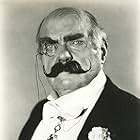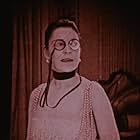NOTE IMDb
7,3/10
6,1 k
MA NOTE
Ajouter une intrigue dans votre langueA naive country girl is tricked into a sham marriage by a wealthy womanizer, then must rebuild her life despite the taint of having borne a child out of wedlock.A naive country girl is tricked into a sham marriage by a wealthy womanizer, then must rebuild her life despite the taint of having borne a child out of wedlock.A naive country girl is tricked into a sham marriage by a wealthy womanizer, then must rebuild her life despite the taint of having borne a child out of wedlock.
Carol Dempster
- Barn Dancer
- (non crédité)
Histoire
Le saviez-vous
- AnecdotesDuring the filming of the ice floe scenes, a fire had to be built underneath G.W. Bitzer's camera in order to keep it warm enough to run.
- GaffesAround the 1 hr and 38 minute mark, Martha visits the Squire and encounters Anna at the door. She enters the room and gives Anna a disapproving look. Behind Anna is the door. When the view changes to a long shot of the room, Martha is still engaging with Anna, but now both are to the left of the door instead of standing in front of it.
- Citations
Anna Moore: This man, an honored guest at your table, why don't you find out what HIS life has been?
- ConnexionsEdited into Histoire(s) du cinéma: Une histoire seule (1989)
Commentaire à la une
What would otherwise be a pretty good, if old-fashioned, melodrama is made memorable by a climax that still holds up decades later as one of the most exciting scenes on film. The movie as a whole is imperfect - it's a bit too long, and is occasionally preachy - but it fits together well, and is a deserving classic of the silent film era.
The story is openly moralistic, and would not have worked without good characters and acting. Lillian Gish is deservedly remembered for her role, but Lowell Sherman is also important as the oily Sanderson - his understated performance makes his villainy more effective, and balances out the parts of the movie that are more heavy-handed (the title cards, in particular, leave no doubt as to how the director feels). The story ends up working pretty well in the context of its era.
What really stands out, of course, is its terrific climax on the river, still justifiably praised after all these years. Carefully conceived and beautifully photographed, it is a most effective way to wind up the story. The riveting drama and the stark beauty of the scenery make a great combination that you won't forget.
This would have been even better if it had been maybe 30 minutes shorter. Some scenes go on longer than necessary, and there is a lot of filler material about the townspeople - mildly amusing, and comic relief from a heavy story, but the comedy is not exactly of Buster Keaton or Charlie Chaplin quality, and a bit less would have been better. Still, the majority of the time the film does keep your attention.
"Way Down East" is a classic in spite of its flaws, one that every silent film fan will want to see. And it also would be worth watching for the climactic sequence alone, for anyone who appreciates quality cinema.
The story is openly moralistic, and would not have worked without good characters and acting. Lillian Gish is deservedly remembered for her role, but Lowell Sherman is also important as the oily Sanderson - his understated performance makes his villainy more effective, and balances out the parts of the movie that are more heavy-handed (the title cards, in particular, leave no doubt as to how the director feels). The story ends up working pretty well in the context of its era.
What really stands out, of course, is its terrific climax on the river, still justifiably praised after all these years. Carefully conceived and beautifully photographed, it is a most effective way to wind up the story. The riveting drama and the stark beauty of the scenery make a great combination that you won't forget.
This would have been even better if it had been maybe 30 minutes shorter. Some scenes go on longer than necessary, and there is a lot of filler material about the townspeople - mildly amusing, and comic relief from a heavy story, but the comedy is not exactly of Buster Keaton or Charlie Chaplin quality, and a bit less would have been better. Still, the majority of the time the film does keep your attention.
"Way Down East" is a classic in spite of its flaws, one that every silent film fan will want to see. And it also would be worth watching for the climactic sequence alone, for anyone who appreciates quality cinema.
- Snow Leopard
- 12 sept. 2001
- Permalien
Meilleurs choix
Connectez-vous pour évaluer et suivre la liste de favoris afin de recevoir des recommandations personnalisées
- How long is Way Down East?Alimenté par Alexa
Détails
Box-office
- Budget
- 700 000 $US (estimé)
- Durée2 heures 25 minutes
- Mixage
- Rapport de forme
- 1.33 : 1
Contribuer à cette page
Suggérer une modification ou ajouter du contenu manquant

Lacune principale
By what name was À travers l'orage (1920) officially released in India in English?
Répondre


































